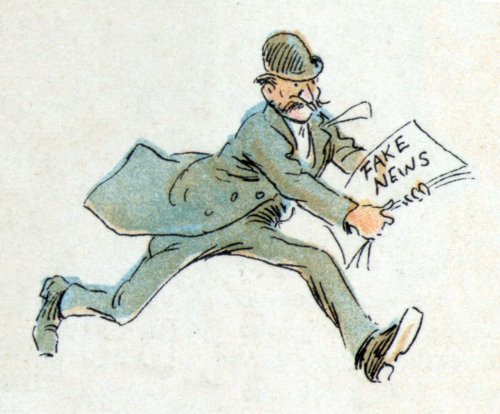In today’s digital age, fake news targeting corporations has become a serious threat. From false reports about product failures to fabricated scandals involving executives, misinformation can spread rapidly across social media and news platforms. This not only confuses the public but also damages the internal morale of employees and the trust customers have in a brand.
As fake news continues to evolve, it’s important to understand its impact and how businesses can respond. In this article, we’ll explore the real-world effects of fake news on corporations, highlight key case studies, and offer practical strategies to protect your organization.
What Is Fake News Targeting Corporations?
Fake news targeting corporations refers to intentionally false or misleading information spread online or in the media to harm a company’s reputation, profits, or leadership. Unlike regular rumors, this content is often created with malicious intent—whether to manipulate stock prices, discredit a company, or sow confusion among stakeholders.
Such news might include:
- False accusations about a product being harmful.
- Fake announcements about leadership changes.
- Misleading claims of bankruptcy or legal trouble.
- Edited images or videos portraying unethical practices.
These stories often go viral because they trigger strong emotional reactions, such as outrage or fear, making people more likely to share them without verifying the facts.
The Viral Nature of Misinformation
Fake news spreads faster than the truth. Research from MIT found that false stories on Twitter are 70% more likely to be retweeted than true ones. Why? Because fake stories are usually crafted to be more sensational.
Corporations often become easy targets because they have:
- A large online presence.
- Public-facing executives.
- Complex operations vulnerable to misinterpretation.
Once fake news catches fire, it’s difficult to control the narrative, especially when news outlets or social influencers pick up the story without fact-checking.
How Fake News Damages Trust
Trust is the foundation of any successful brand. When fake news strikes, even loyal customers may start to doubt a company’s honesty and reliability.
1. Public Confusion
People rely on news sources and social media to stay informed. When they encounter fake stories—such as a fake product recall or a made-up scandal—they often can’t distinguish fact from fiction. As a result, trust erodes.
Example:
In 2018, a fake press release claimed that PepsiCo’s CEO had resigned due to political pressure. Though untrue, the story spread quickly, confusing investors and consumers alike.
2. Stock Market Impact
For publicly traded companies, fake news can directly impact stock prices. Investors may sell off shares in panic, leading to financial losses and a damaged market reputation.
Example:
A fake tweet in 2013 claimed that explosions had occurred at the White House, injuring the President. Within minutes, the Dow Jones dropped 140 points—wiping out $136 billion in value, temporarily. Though not targeting a specific company, the incident shows how quickly false news can rattle markets.
3. Damaged Customer Relationships
Customers expect transparency. When they see negative stories about a brand they use, they may feel betrayed or unsafe. Even after the truth emerges, regaining that trust can take time.
The Hidden Impact on Employee Morale
While public reputation gets most of the attention, the internal damage caused by fake news is often worse—and longer-lasting.
1. Increased Anxiety and Confusion
When employees hear false rumors—such as impending layoffs or executive misconduct—they often feel uncertain about their future. This leads to stress, fear, and in some cases, reduced productivity.
2. Reduced Engagement and Loyalty
Employees who lose trust in leadership are less likely to stay committed. If they believe their company is dishonest or under attack with no response, they may disengage—or leave entirely.
3. Workplace Rumors and Tension
Fake news often leads to internal gossip. Even if leadership denies the claims, employees might wonder: Is something going on that they’re not telling us?
This creates a toxic environment where speculation overrides facts.
Case Study: The Starbucks Controversy
In 2017, a viral post claimed that Starbucks was offering free drinks to undocumented immigrants. It included what looked like an official Starbucks coupon with the words “UNDOCUMENTED AMERICANS DAY.” The story was completely false—but it spread like wildfire.
The results:
- Outrage flooded the company’s social media.
- Employees received angry calls and abuse.
- Store morale dropped due to confusion and backlash.
Starbucks had to launch a full media response to clarify the truth and support employees caught in the crossfire.
Why Are Corporations Targeted?

Fake news creators target corporations for several reasons:
- Financial Gain: Fake reports can manipulate stock prices for short-term trading profits.
- Political Motives: Some aim to tarnish brands seen as supporting certain ideologies.
- Competitive Sabotage: Rivals may attempt to harm a company’s reputation to gain market share.
- Viral Attention: Sensational stories generate clicks and ad revenue for fake news websites.
How Businesses Can Fight Back
1. Monitor Your Online Reputation
Use digital tools like Google Alerts, Brand24, or Mention to track mentions of your company in real time. Early detection is key to stopping fake news before it spreads too far.
2. Respond Quickly and Transparently
If a fake story gains traction, issue a clear public statement. Use your verified social media channels and website to share the facts. The faster you respond, the better you can control the narrative.
Pro Tip: Use plain language and visual assets (like infographics) to explain the truth clearly.
3. Empower Your Employees
Keep your internal team informed before they hear false claims from outside sources. Send internal memos or host meetings to explain what’s going on. Make sure your staff feels supported and prepared to answer questions.
4. Build a Strong Media Presence
Having an established and trusted media presence gives you a voice when controversy arises. Invest in PR, content marketing, and media relations. If you already have public trust, fake news will have less power.
5. Train for Crisis Communication
Prepare in advance by creating a crisis response plan. Assign roles to key personnel, draft message templates, and rehearse different scenarios. When the time comes, you’ll be ready to act swiftly and smartly.
Role of Technology in Combating Fake News
Tech companies are also stepping in to help. Social platforms like X (formerly Twitter), Meta, and YouTube have begun labeling or removing misleading content. AI tools can now scan the web for misinformation and alert companies in real time.
However, corporations shouldn’t rely solely on platforms. Developing an in-house system—or hiring a third-party monitoring service—ensures faster response and deeper insights.
The Legal Side: Can You Sue for Fake News?
Yes, but it’s complicated.
Businesses can sue for defamation if:
- The news is proven false.
- The story caused financial or reputational harm.
- The publisher acted with negligence or malice.
However, legal cases can take months or years to resolve, and by then the damage may already be done. Lawsuits should be a last resort—used strategically to discourage repeat offenses.
The Bottom Line
Fake news targeting corporations is more than just a nuisance—it’s a real threat to brand trust, employee morale, and business operations. In a world where anyone can publish anything, companies must be proactive, transparent, and united in their response.
The best defense is a strong offense: build a culture of trust, stay alert, and empower both employees and customers with accurate, timely information.
By doing so, you can protect your reputation and come out stronger—even in the face of misinformation.
Do Follow On Instagram.
Read Next – Top Social Issues for Nonprofits in 2025: Access, Mental Health & Basic Needs






